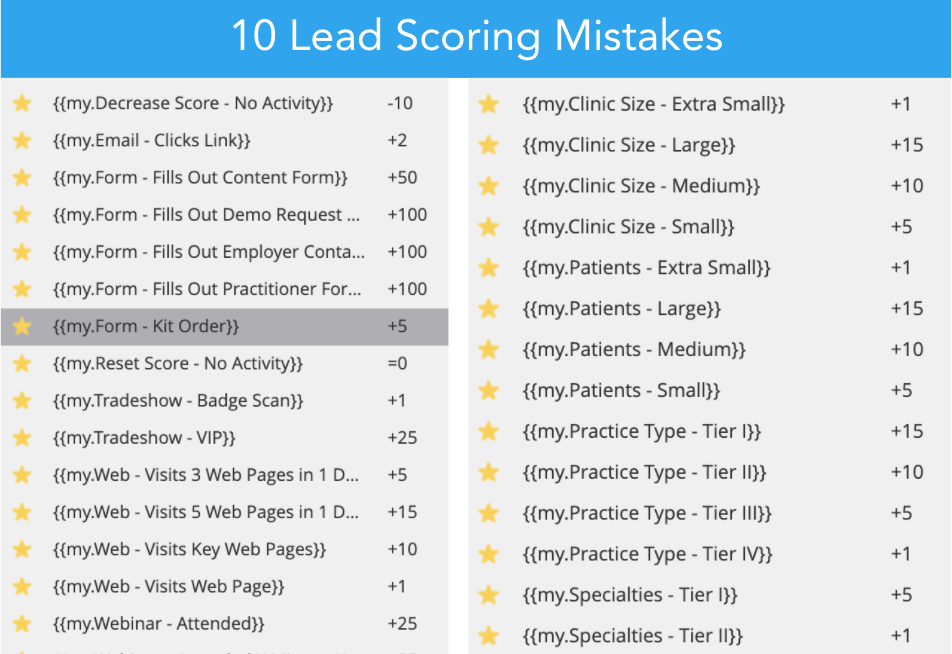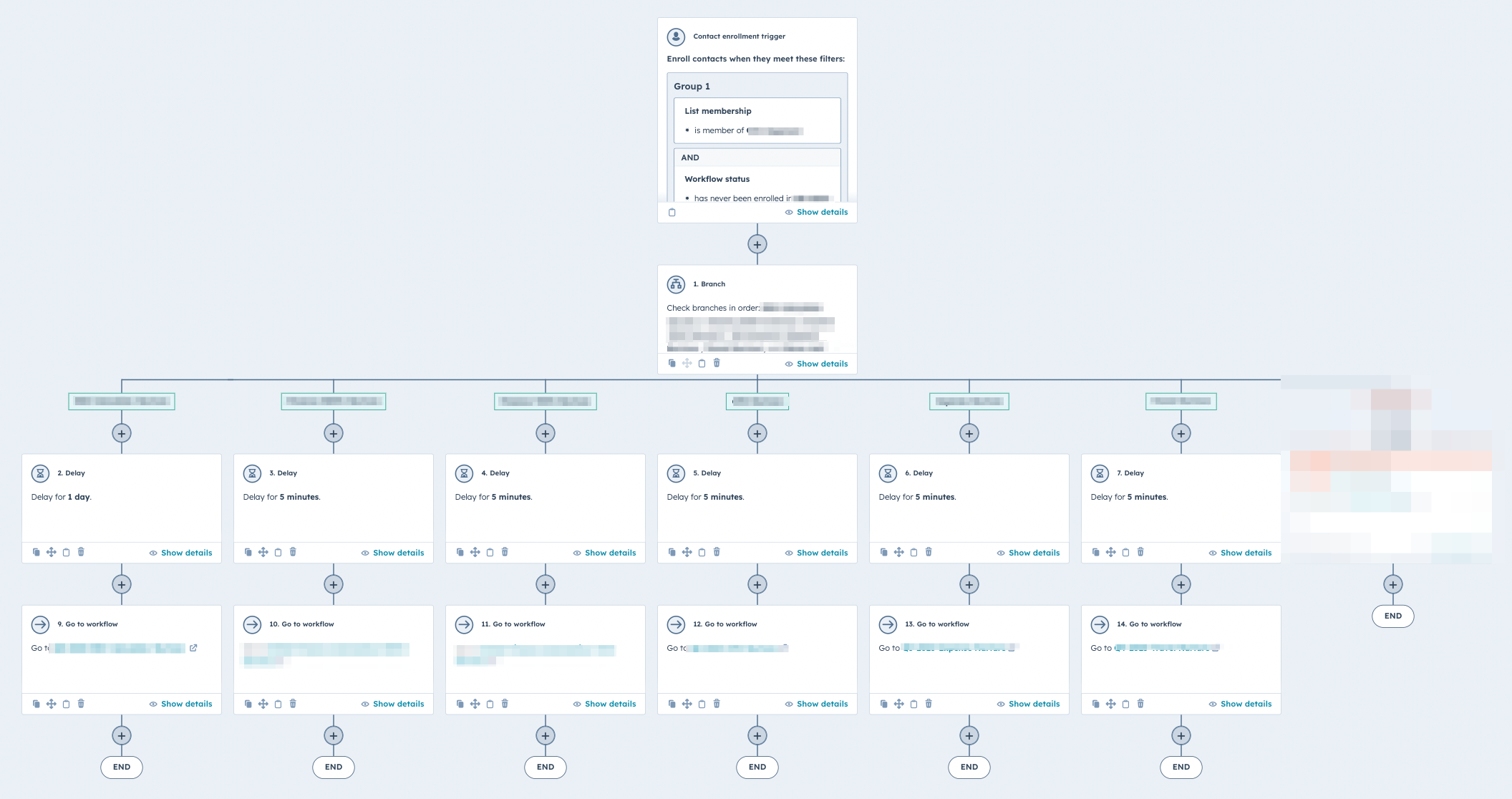Lead scoring models have to be adaptive, not overwrought and complex. Here are ten lead scoring mistakes I regularly see.
>> Related: How to Create a Better Lead Scoring Model [template] <<
In this post:
1. Not working with Sales
This is no time for silos. Sales talks directly with your prospects and can provide feedback in real time. Honestly if they’re not involved in the process they’re likely not going to trust the model. And then what are we even doing here at that point? Involving them early and often only helps both of you.
2. Needless complexity
Marketers tend to shove tons of behaviors and demographic attributes into scoring. It’s interesting, but it’s also makes scoring needlessly complex. Keep it simple, especially as you’re validating the scoring with Sales.
3. Demanding perfect titles
Title is usually a freeform text field, and it’s just never going to be 100% perfect. Titles also have different meanings internationally. Be very inclusive of any free text field. Otherwise you’re excluding good leads.
4. Using email opens/clicks
Another lead scoring mistake is using shoddy scoring criteria — data points that aren’t accurate or reliable. Don’t score off of any sort of email activity, opens or clicks. Tons of spam softwares automatically open emails and click emails. You can get around this somewhat with a honeypot or text only links, but spam technologies are advancing all the time. I would just score off more significant engagements like form fills.
5. Fantasizing about data you don’t have
One common mistake is scoring on data that you don’t have. “Industry” is a common offender. Sales teams usually feel very strongly about which industries are valuable. Then Marketing realizes the Industry field is only on half (or none!) of the forms, and it doesn’t match the pick list values in Salesforce. This just isn’t information you have. ¯\_(ツ)_/¯
6. Faffing around with lead and demo scores
If someone is asking to talk to Sales, whether that’s a contact us form, a demo form, or a trial form, those leads should go to Sales, full stop. Even if it’s a Mickey Mouse, even if it’s not your ideal target. It’s annoying, but ensure a person does the [dis]qualification and not a scoring formula. This is easily the most painful of lead scoring mistakes.
7. Scoring Inactives over and over
Negative scoring usually comes into play with inactivity. So whether that person isn’t opening emails, isn’t coming to the website, isn’t going to any trade shows, isn’t downloading any content. They’re not responding to Sales in a week, or a month, or a few months. If you’re really getting to 365 days with zero activity, I question whether this person should be in your database at all. Just remove them.
8. Disqualifying “Mickey Mouse”
No one wants to call “Mickey Mouse.” Sales prefers to disqualify leads with crappy contact data. A better alternative is resetting the score to zero in acknowledgement, which I admit can be controversial. But if Mickey comes back, fills out a new form, and gives a legitimate name, we want to capture that person is now valid and send them over to Sales.
9. Using predictive models
Unless you are a mega B2C company and you’re getting thousands of leads per day, you just don’t need this level of sophistication. And even if you have a ton of leads coming in, you also need the characteristics of lead quality to be changing over time to make this worthwhile. I rarely see a use case where this would be a game changer.
10. Running multiple models
I understand the temptation — you have multiple products, siloed geographies, different teams. But of all the lead scoring mistakes, this one will cause the most headaches long term. I strongly recommend using a single model. You can usually incorporate all kinds of idiosyncrasies for different products, segments, or geographies.
Sticking with one model makes your life easier, is more scalable, and it’s clear how a lead is being scored throughout the whole buyer’s journey. It’s also easier to make (inevitable) iterations as sales territories and product lines change.
More deep thoughts on lead scoring
- [Template] How to Create a Better Lead Scoring Model
- Scoring Leads By Email Engagement and Clicks? Big Mistake.
- [Checklist] How to Test Lead Scoring
- How to Create Custom HubSpot Behavior & Demographic Lead Scores
- How to: Demographic Lead Scoring in Marketo
- 8 Lead Management Process Samples
- How to: Build an MQL SLA Alert in Salesforce





